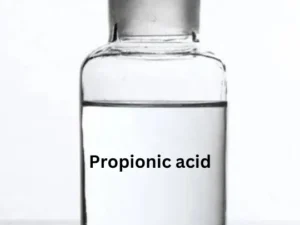Description
Acetic Acid: The Versatile Workhorse in Your Kitchen and Beyond
Acetic acid, a familiar name and smell to many, is a ubiquitous chemical compound with a surprisingly wide range of applications. From pickling vegetables to powering industrial processes, acetic acid plays a crucial role in our everyday lives. But what exactly is it, and why is it so versatile?
Vinegar’s Tangy Secret:
The most commonly encountered form of acetic acid is vinegar. Typically, vinegar is a 4-8% solution of acetic acid in water. This mild concentration is what gives vinegar its characteristic sour taste and aroma, making it a staple ingredient for cooking, preserving food, and even cleaning.
Beyond the Kitchen: A Chemical Powerhouse:
While most recognize acetic acid for its culinary applications, its industrial uses are far more extensive. Acetic acid is a vital raw material in the production of:
- Vinyl Acetate Monomer (VAM): A key ingredient in adhesives, paints, coatings, and textiles. This makes acetic acid indirectly present in countless products we use daily.
- Acetic Anhydride: Used in the manufacture of pharmaceuticals, plastics, and photographic film.
- Cellulose Acetate: Found in synthetic fibers, cigarette filters, and photographic film.
- Various Salts and Esters: Utilized in the production of dyes, perfumes, and other chemical products.
Production Methods: From Fermentation to Petrochemicals:
Acetic acid can be produced through both natural and synthetic methods.
- Fermentation: This age-old process involves the fermentation of sugars or ethanol by acetic acid bacteria (Acetobacter). This is the method used to produce vinegar.
- Petrochemical Synthesis: The majority of industrial acetic acid is produced synthetically from petrochemical feedstocks, primarily methane, via various processes like carbonylation.
Safety Considerations:
While diluted acetic acid, like vinegar, is generally safe, concentrated acetic acid can be corrosive and irritating. Direct contact with skin can cause burns, and inhaling concentrated vapors can irritate the respiratory system. Therefore, proper handling and ventilation are crucial when working with higher concentrations.
A Sustainable Future:
As the world strives for more sustainable practices, research into greener production methods for acetic acid is gaining momentum. Bio-based production routes, utilizing renewable resources like biomass and renewable energy sources, are being explored to reduce the environmental impact of acetic acid production.
Conclusion:
Acetic acid, often overlooked, is a fundamental chemical compound with a profound impact on our daily lives. From adding a tangy zest to our meals to serving as a critical building block in countless industrial processes, its versatility is undeniable. As research continues to explore sustainable production methods, acetic acid is poised to remain a crucial ingredient in a wide array of applications for years to come. Its simple structure belies its power and importance, making it a true workhorse in both the kitchen and the chemical industry.












Reviews
There are no reviews yet.